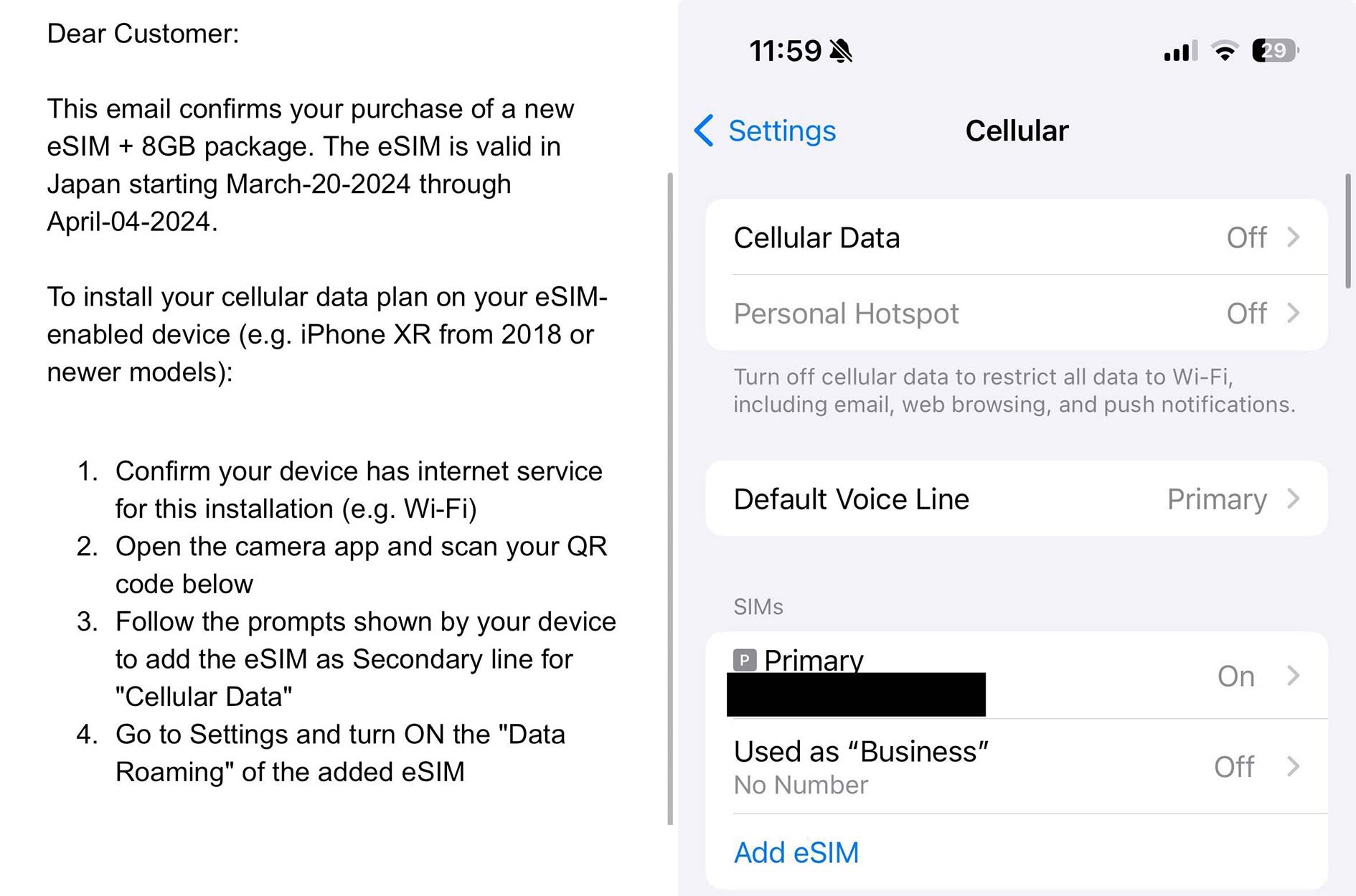
At the end of March, I went on a 10-day trip to Japan. It was my second time in the country after an impeccably timed pre-pandemic outing in February 2020, and I loved getting to take in more of the beautiful landscapes and delicious food.
This time around, though, my friends and I tried something different. In 2020, we rented a ‘Pocket WiFi’ device from the airport, which meant having to pre-book online, pick it up from the airport and then drop it off. Not a big ordeal by any means, but still a bit of a hassle, especially during lengthy incoming and outgoing travel times.
This year, however, I opted for an eSIM, and I have to say, as a first-time user, I really dug the whole experience.
After covering Flighthub earlier this year, the online travel agency offered us its newly launched Canadian eSIM in partnership with Celitech. Their eSIM offers non-throttled 5G/LTE access in more than 205 countries around the world, including Japan, and since I knew I was going on vacation soon, I eagerly accepted.
Once I said when I’d be travelling, I was given an 8GB plan that would be valid between March 20th and April 4th, which was actually slightly longer than when I’d be in Japan. (Having that extra cushion was a nice comfort, though, given how unexpected delays happen all the time when travelling.)
All of this was outlined in an email with a simple four-step process to set up the eSIM on my phone. Graciously, all you have to do is scan the embedded QR code with your phone and then follow the prompts on your device to add the eSIM as a Secondary Line. I did also have difficulties completing the setup in Ontario until I arrived in Japan (I was getting an error message), although FlightHub says you don’t need to be in the destination country to do so. Still, this was far more preferable to trying to navigate Japanese signs to find the Pocket Wi-Fi kiosk at the airport while jet-lagged.
But the best part, of course, is avoiding steep roaming fees. I’m on Koodo, whose Easy Roam service lets you pay to use your data plan in the U.S. and other countries. Unfortunately, the cost has gone up significantly over the past few years, and it’s now a whopping $16/day to use Easy Roam internationally. That price is comparable to what other Canadian carriers charge for their roaming plans.
On work trips where I’m only gone for a day or two, that’s more palatable, but there was no way I was doing that for a longer personal trip in Japan. Given that I would have used my data for as many as 11 days (March 22nd to April 1st), that would have cost up to $176 with Easy Roam. It’s worth noting that Koodo caps international Easy Roam prices at $400 (about 25 days) and then customers can keep using it for free after that point. Back when Easy Roam first launched, however, the international cost was $10/day and the cap was $150 per billing cycle.
FlightHub’s eSIM package, by comparison, was $70. While the FlightHub rep said the $32/3GB plan would have been the recommended base for a trip of that length and location, I liked having the extra data for social media posts, Maps and emergencies. (For context, Japan’s taxi system, to which Uber is connected, can be extremely expensive, so having readily available data to help you navigate the country’s intricate transit lines is especially useful.) By the end of my trip, I’d pretty much hit 8GB anyway.
FlightHub typically mentions potential savings of up to 80 percent versus traditional plans with service providers, and the $70 versus $176 certainly lives up to that. Of course, using an eSIM also means you don’t have to burn through your personal data cap, which could, naturally, only lead to further costs either when travelling or even once you return home.
I also found that the connection itself was quite smooth. There were a few brief instances on the bullet train where it dipped, but that could have easily been due to the rural areas we were passing through. Otherwise, the connection remained consistent throughout my entire trip.
All in all, I was incredibly pleased with the eSIM experience. It should be noted, however, that FlightHub does have one pretty major limitation — you have to have booked your trip with the agency. With flights being so expensive nowadays, you’ll likely look for flights from a variety of sources, so this is a bit inflexible. In my case, I used Air Canada Aeroplan points to cover the flight home. (You can, at least, add on an eSIM both during and after FlightHub’s checkout process.)
Of course, FlightHub is just one eSIM option, and these are all just my first impressions of it. There are many other eSIM alternatives, which you can learn more about in our handy explainer. But if you’re going to book through FlightHub anyway, I would highly recommend going for an eSIM, both for convenience and affordability.
Update: 05/04/2024 at 1:42pm ET — Updated to clarify that while I had issues completing the setup of the eSIM until I reached Japan, FlightHub says you don’t need to be in the destination country to do so.
MobileSyrup may earn a commission from purchases made via our links, which helps fund the journalism we provide free on our website. These links do not influence our editorial content. Support us here.



